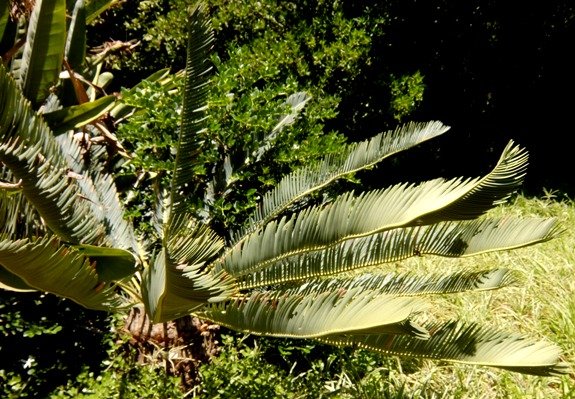Encephalartos laevifolius

Author: Ivan Lätti
Photographer: Ivan Lätti
Encephalartos laevifolius, the Kaapsehoop cycad, grows stems of up to 3 m (SA Tree List No. 6). The bracts or cataphylls on the tip of the stem are smooth (hairless), long and sharply pointed.
The leaves are dark green, the rachises yellow. Leaves become up to 1,5 m long. The narrow, linear leaflets are long, from 12 cm to 15 cm, and between 6 mm and 9 mm wide. The leaflet blades are aligned in one flat plane on each side of the rachis, not twisted sideways. The two planes are angled up, forming a V-shaped trough or valley above the rachis. The leaflet margins are entire with no toothing. The lowermost leaflets are not reduced to prickles. The leaflets are hairless, but covered in a greyish bloom when young.
The cones have short, fine grey hairs but are not woolly. The male or pollen cones become curved when mature, up to 40 cm long and 10 cm wide. The female or fruit cones only reach 30 cm in length and up to 13 cm in diameter. The seeds are yellow.
The species distribution ranged in the past along the east of South Africa, from the Eastern Cape through KwaZulu-Natal and Mpumalanga to Limpopo. This range has been dramatically and rapidly reduced by human intervention. The plant is currently found only in the mountains near Kaapsehoop in Mpumalanga.
The plant in habitat is restricted to high mountain peaks, where it grows on steep grassland or low shrub slopes in the mist-belt, at altitudes from 1300 m to 1500 m. The habitat population is critically endangered early in the twenty first century, due to plant collection by people, habitat loss from farming and invasive exotic plants. There is also a species of fusarium fungus that attacks the cones and renders the seed sterile (Hugo, 2014; Coates Palgrave, 2002; http://redlist.sanbi.org).

